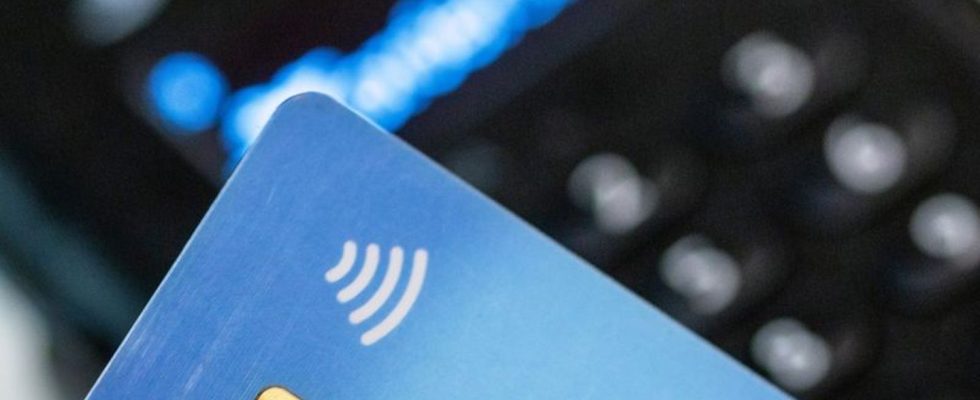consumer
Germany is lagging behind when it comes to digital payments
A person holds their debit card over an EC reader for contactless payment. photo
© Fernando Gutierrez-Juarez/dpa
Paying by card or smartphone has increased – even among cash-savvy Germans. However, compared to other European countries, electronic procedures are still rarely used.
According to an analysis, Germans are lagging behind when it comes to electronic payments despite increasing usage figures Europe in the lower midfield. Last year, they paid on average 284 times by debit, credit card or smartphone, as the strategy consultancy Boston Consulting Group (BCG) calculated. That’s almost four percent growth compared to the previous year.
In a comparison of 17 European countries, Germany was in 12th place, BCG announced today. “For Germans, cash is still an important means of payment, so there is still a lot of room for improvement for electronic transactions,” said Markus Ampenberger, BCG payment expert and co-author of the study.
Cashless payment transactions are increasing
In this regard, the European champions in paying without cash were the Norwegians with an average of 708 digital transactions last year, followed by the Danes (610) and Luxembourgers (598). Spaniards (281), Austrians (247), Portuguese (246), Italians (186) and Maltese (180) paid electronically less often than Germans.
However, from 2021 to 2022, cashless payment transactions increased in all 17 countries. During the pandemic, for example, contactless payment was advertised as particularly hygienic in Germany. The data for processing the payment is exchanged encrypted with the terminal at the checkout when customers hold their Girocard or credit card or smartphone or smartwatch close to the device.
The “Global Payments Report”, for which Boston Consulting annually analyzes the global payment flows and revenues of payment service providers, also comes to the conclusion that the global revenue pool of providers has increased on average by 8.3 percent to $1.6 trillion over the past five years grew in 2022. This includes income from payment transactions as well as fees and interest income from checking accounts or issued credit cards.

